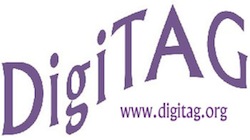
DigiTAG has published a new guide on digital switchover; which provides a comprehensive overview of the key regulatory, business, and technical issues that must be addressed for a successful digital switchover process. It also explores strategies for analogue switch-off as well as some of the key topics national administrations will need to consider in the next few years such as the allocation of the digital dividend, spectrum sharing and the impact of mobile broadband services on the DTT platform. Nearly all countries around the world have adopted a DTT standard and are now preparing to launch DTT services. Lessons can already be learned from countries that have completed the transition from analogue to digital terrestrial television. Most notably, successful transitions have allowed the terrestrial television platform to expand its service offering to viewers, thereby encouraging an initial market-led transition to digital technology. “The status of digital switchover varies around the world. This new DigiTAG Guide seeks to help those countries beginning the process learning from the experiences of those countries having completed switchover,” noted Lieven Vermaele, president of DigiTAG and director of Technology and Innovation at the European Broadcasting Union (EBU). “The new DigiTAG Guide also provides insight into the frequency management issues that national administrations will need to consider over the next few years. National administrations must provide clarity on their plans for the use of UHF spectrum and how the decisions they make will impact the DTT platform. It is only with the guarantee of continued spectrum availability that it will be possible for broadcast service providers to invest in the future development of the DTT platform. The coming years will provide many new opportunities and challenges on the DTT platform. To succeed in the long-term, the DTT platform must retain its flexibility and agility.” But the completion of digital switchover does not signify that digital migration is completed. The DTT platform continues to evolve as new services and technologies are developed. There is also pressure on broadcast spectrum as frequencies traditionally reserved for broadcast television services, in the UHF band (470 MHz to 862 MHz) and the VHF band (173 MHz to 230 MHz), are being reconsidered. DigiTAG is the organisation that promotes DTT and works towards harmonising the DTT standard now and in the future. Its remit has also recently changed to become the body through which broadcasters and the DTT can work together to protect broadcast spectrum. For a copy of the new ‘Guide to DTT Switchover’ go to the DigiTAG website www.digitag.org.






